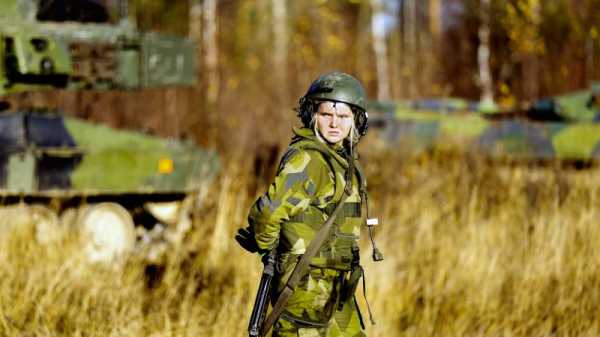
Sweden will invest heavily in defence in a historic move that will bring military spending in line with NATO’s goal of 2% of the GDP, according to an announcement by the government on Thursday (10 March).
In 2021, the Swedish defence budget was equivalent to €6 billion, but it is now set to increase to €10 billion, bringing it to the level of the NATO threshold, despite it not being a member.
“This is a huge investment”, said Defence Minister Peter Hultqvist at a press conference with Prime Minister Magdalena Andersson. “This is an extremely large investment and can only be compared with the investments in defence in the 1950s,” he added.
The Swedish defence budget has not reached these highs since the 1990s. Andersson said the new investment will be implemented as soon as possible, but as Hultqvist noted, building up defence capabilities takes time.
“It will take many, many years. We want to do this in a systematic, realistic and feasible way. We must get the most out of every krona we spend,” he said.
His comments echo those of the Swedish Defence force Commander-in-Chief Micael Bydén who stated in an interview for SVT that “It’s important that every penny has a military impact.”

Sweden slams Russia with ‘Cold War rhetoric’
Prime Minister Magdalena Andersson slammed Russia’s attack on Ukraine using rhetoric experts say the country has not witnessed “since the Cold War”.
“Russia’s armed aggression is more than an attack on Ukraine, it is an attack on the right of every …
No timetable
But when pressed, Andersson did not give a definitive timeframe and said the budget will reach 2% of the GDP “as soon as it is technically possible.”
Finance Minister Mikael Damberg was unwilling to say where the money would come from and whether it would result in increased taxes. To increase it from today’s level would require an investment of €4 billion each year.
“The sums involved are large. It would be going backwards to settle on the year before we have seen the authorities’ evidence on how quickly it can be done and how much defence capability we will have,” Damberg said.
More people to do military service
As a result of the government’s initiative, more young people will have to do military service.
“In the long term, more young people will need to prepare for military service and contribute to military defence. But this is also about civil defence,” said Andersson.
Established in 1901, the Swedish military service was suspended in 2010 in favour of a professional army, before being reinstated by parliament in March 2017 after a rise in tensions in the Baltic region, namely around the strategically located Swedish island of Gotland.

Sweden will join NATO within five years, says opposition leader
I am “absolutely convinced” Sweden will join NATO within five years, the chair of the moderate party, Ulf Kristersson, has said.
Interviewed by the tabloid Expressen on 2 February, Kristersson said he would like to see Sweden and Finland proceeding towards …
Reactions of the opposition
Andersson’s plans to raise the defence spending are very likely to be met with a large consensus in the Swedish Parliament. Several parties were pushing for an increase in expenditure and criticised the government’s slow pace on the matter.
“Basically, it sends the right message that more parties are joining in to increase defence capability and that two per cent of GDP should go to defence. The problem is that the government cannot say when,” said Elisabeth Svantesson, economic policy spokesperson and deputy chair of the opposition Moderate Party.
She added that the Moderates argued that such an objective should be met in 2025, as indicated in their latest announcement on 3 March.
The far-right Sweden Democrats also believe that the idea is good but that the government is late in its implementation by “at least 20-25 years”.
“The fact that the government now seems to see the need to strengthen the defence is, of course, positive. But the fact that the defence budget will be increased to 2% of GDP “as soon as practically possible” says nothing about any concrete timetable. It sounds more like a way of delaying the issue.”, wrote party leader Jimmie Åkesson on Facebook.
When asked why she did not invest much in defence in the past, given the security policy developments in recent years, Andersson defended the Social Democrat party, in power since 2014.
“If the government had done nothing since 2014, it would have been a serious issue, but fortunately, that is not what we have done. We have started the biggest rearmament efforts since the 1950s and the message today is that we want to continue this rearmament,” said the prime minister.
Over the years, the Riksdag had indeed decided to increase defence spending, which was to rise from SEK 66 billion in 2021 to SEK 91 billion in 2025 before Russia’s invasion of Ukraine.
[Edited by Alice Taylor]
Source: euractiv.com



